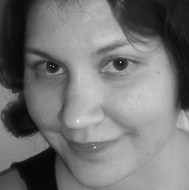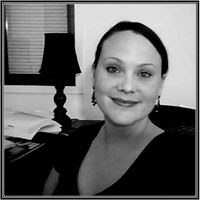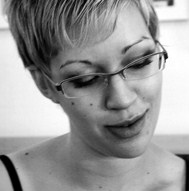 Jenny Brundage, a senior at Arizona State University majoring in Creative Writing and minoring in Communications, is currently one of the Superstition Review Art Editors.
Jenny Brundage, a senior at Arizona State University majoring in Creative Writing and minoring in Communications, is currently one of the Superstition Review Art Editors.
Superstition Review: What do you do for SR? Please list job activities/explanation.
Jenny Brundage: Art Editor–solicit art, help decide both what’s chosen and how it’s displayed, do artist interviews, acquire and edit artists’ bios, acquire artist pics for their bios.
SR: How did you hear about or get involved with Superstition Review?
JB: I don’t recall. I do remember Trish being one of my favorite teachers I’ve had at ASU–although we’ve never met in real life.
SR: What is your favorite section of SR? Why?
JB: Art, because it truly suits the digital medium.
SR: Who is your dream contributor to the journal?
JB: Dorothea Tanning. She’s somewhere near the century mark, but still alive and working. She was associated with the Surrealist and Dadaist movements, as an artist, but really did her own thing. She’s a legendary painter, a skilled poet, and an excellent creative nonfiction author.
SR: What job, other than your own, would you like to try out in the journal?
JB: One of the managerial or PR types of positions.
SR: What are you most excited for in the upcoming issue?
JB: I’m most excited to see the completed issue, all new and shiny.
SR: What was the first book you remember falling in love with and what made it so special?
JB: No Flying in the House in Kindergarten was my first big book, and so it was an achievement as well as a fun book.
SR: What are you currently reading?
JB: I recently finished volume 5 of Ross Campbell’s Wet Moon, which was amazing and ended on a huge cliffhanger.
SR: What are some of your favorite literary links?
JB: My favorite writing site is Ralan.com, and most of my other favorites (Submitting to the Black Hole, Preditors and Editors, etc…) link from there. It’s where I check market listings and hear information. Plus, it’s free! I also subscribe to the free mini-version of Publishers Weekly.
SR: Have you ever submitted to or been published in a literary/art magazine? How was that process? What was it like, waiting?
JB: Yes, I have had a story in The Pedestal Magazine, which you can still find in their archives (“The Jig”). They were quick to reply with a “yes”–I think it was under two months. It was standard process: sign the contract and get the check. It was nice having my story discussed in that issue’s intro, not just seeing the story itself appear.
I’ve never had my art in any literary magazines (might’ve modeled for, but not created). I’ve had paintings and photography in larger shows (subject-specific, not my work featured) at Alwun House in the past. I’ve sold a commission before, but don’t really focus on art because I’m not that great at it.





